IRS AUCTION NOW!
Bid by June 3rd
All of the logs that are brought to our yard have been hand selected by our skilled log buyers, based on quality and size. NNT works hard to ensure that poor grade lumber is culled out and sold for a different purpose. We pride ourselves on being able to produce and provide the absolute highest grades available. All of our domestics are selectively harvested with the quality of the wood as well and the forest in mind. We work hard to ensure that there is more forest for years to come.
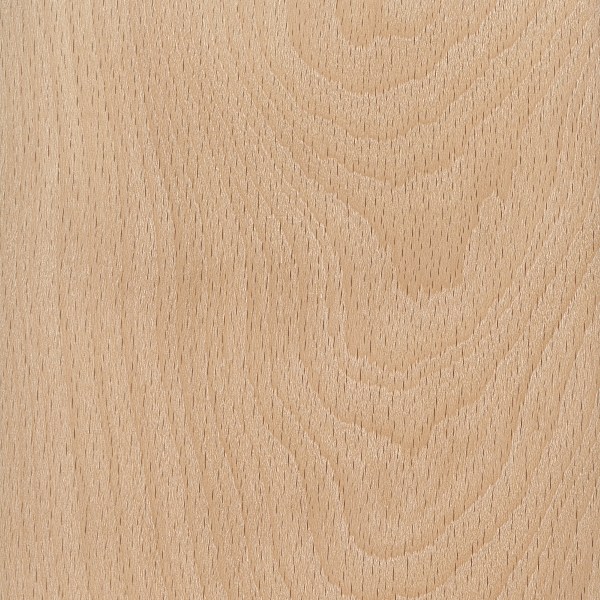
Color/Appearance: Beech is typically a pale cream color, sometimes with a pink or brown hue. Veneer tends to be slightly darker colored, as slicing the veneer usually requires the wood to be prepared with steam, which gives the wood a more golden tone. (See scan below.) Flatsawn surfaces tend to be very plain, while quartersawn surfaces exhibit a silvery fleck pattern.
Grain/Texture: Grain is straight, with a fine to medium uniform texture. Moderate natural luster.
Endgrain: Diffuse-porous; small pores gradually becoming less frequent from earlywood to latewood; solitary and in multiples and clusters; tyloses occasionally present; growth rings distinct due decreased latewood pore frequency; rays easily visible without lens, though size is inconsistent, noded; parenchyma usually not visible with lens.
Rot Resistance: Beech is considered non-durable or perishable; it is also susceptible to insect attack.
Workability: Overall good workability; it machines well, and glues, finishes, and turns well. Beech also responds superbly to steam-bending. It does, however, have a large amount of movement in service, so movement and wood stability must be taken into account.
Odor: No characteristic odor.
Sustainability: This wood species is not listed in the CITES Appendices or on the IUCN Red List of Threatened Species.
Common Uses: Lumber, veneer, flooring, crates/pallets, railroad ties, musical instruments, furniture, turned objects, and other small wooden objects.
Comments: American Beech is sometimes underrated and under-appreciated: which may be due to its somewhat bland appearance. Yet considering its decent strength and hardness—and its comparatively low cost—Beech represents an excellent value for woodworkers.
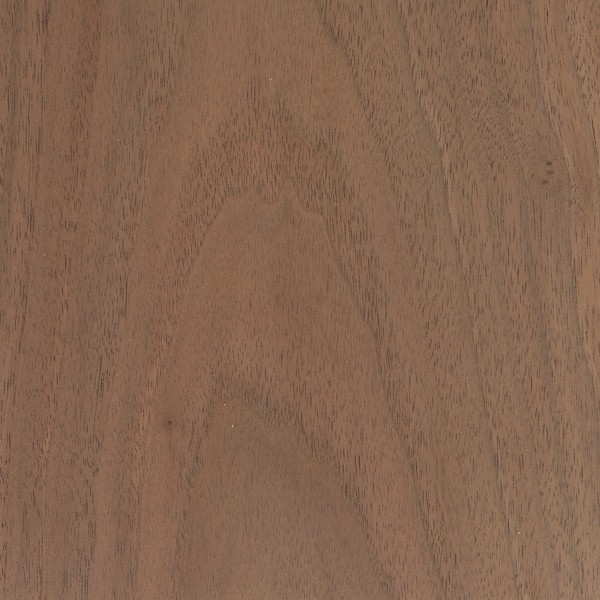
Color/Appearance: Heartwood can range from a lighter pale brown to a dark chocolate brown with darker brown streaks. Color can sometimes have a grey, purple, or reddish cast. Sapwood is pale yellow-gray to nearly white. Figured grain patterns such as curl, crotch, and burl are also seen.
Grain/Texture: Grain is usually straight, but can be irregular. Has a medium texture and moderate natural luster.
Endgrain: Semi-ring-porous; large earlywood pores grading to medium latewood pores, few; solitary and radial multiples of 2-3; tyloses occasionally to abundantly present; growth rings distinct; rays barely visible without lens; parenchyma banded (marginal), apotracheal parenchyma diffuse-in-aggregates (sometimes very faint and barely visible even with lens).
Rot Resistance: Black Walnut is rated as very durable in terms of decay resistance, though it is susceptible to insect attack.
Workability: Typically easy to work provided the grain is straight and regular. Planer tearout can sometimes be a problem when surfacing pieces with irregular or figured grain. Glues, stains, and finishes well, (though walnut is rarely stained). Responds well to steam bending.
Odor: Black Walnut has a faint, mild odor when being worked.
Sustainability: This wood species is not listed in the CITES Appendices or on the IUCN Red List of Threatened Species.
Common Uses: Furniture, cabinetry, gunstocks, interior paneling, veneer, turned items, and other small wooden objects and novelties.
Comments: It would be hard to overstate Black Walnut’s popularity among woodworkers in the United States. Its cooperative working characteristics, coupled with its rich brown coloration puts the wood in a class by itself among temperate-zone hardwoods. To cap it off, the wood also has good dimensional stability, shock resistance, and strength properties.

Color/Appearance: Heartwood is usually a light to medium tan, sometimes with a reddish tint. Growth rings are darker and form fairly distinct grain patterns. Sapwood is a pale yellowish white.
Grain/Texture: Grain is typically straight, with a medium to coarse texture. Silky natural luster.
Endgrain: Semi-ring-porous; medium-large earlywood pores gradually decreasing to small latewood pores; solitary and radial multiples of 2-3; tyloses occasionally to abundantly present; growth rings distinct; rays barely visible without lens; parenchyma banded (marginal), apotracheal parenchyma diffuse-in-aggregates (sometimes very faint and barely visible even with lens).
Rot Resistance: Decay resistance is rated as moderately durable to non-durable.; also susceptible to insect attack.
Workability: Butternut is easily worked with both hand and machine tools. However, being so soft, Butternut has a tendency to leave some fuzzy surfaces after planing or sanding, and sharp cutters and fine-grit sandpaper is recommended. Butternut glues, stains, and finishes well.
Odor: Butternut has virtually no scent or odor when being worked.
Sustainability: This wood species is not listed in the CITES Appendices or on the IUCN Red List of Threatened Species.
Common Uses: Veneer, carving, furniture, interior trim, boxes, and crates.
Comments: Sometimes called White Walnut, Butternut is indeed closely related to Black Walnut. While the difference is not black and white, the wood of Butternut is considerably lighter-colored than Black Walnut, as well as being very soft and lightweight.
Butternut trees can be distinguished from Black Walnut by looking at its fruit: Butternut’s fruit is more oblong or oval shaped, while Walnut is nearly round; (see illustration below). The commercial potential of Butternut’s edible fruit (nuts) is generally regarded as being more valuable than its lumber. (Butternuts are not related to Butternut squash, which comes from an unrelated plant—Cucurbita moschata.)
The trunks of Butternut trees are fluted, which is sometimes still evident in processed lumber—the growth rings in the endgrain may appear more polygonal and faceted rather than perfectly circular.
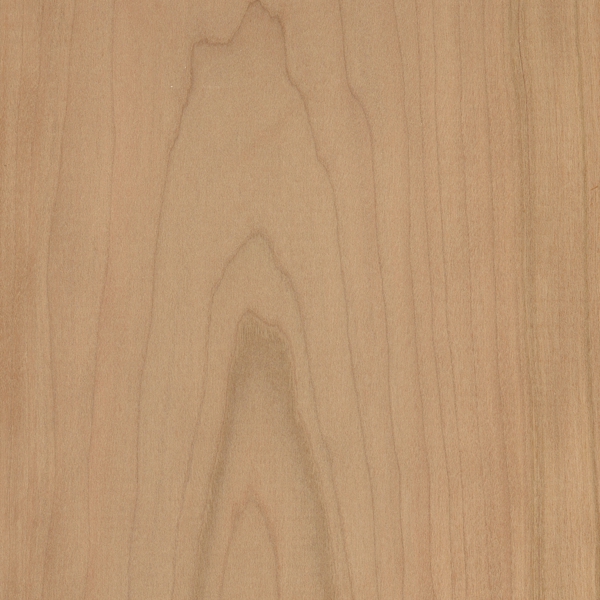
Color/Appearance: Heartwood is a light pinkish brown when freshly cut, darkening to a deeper golden brown with time and upon exposure to light. Sapwood is a pale yellowish color.
Grain/Texture: Has a fine texture with close grain. The grain is usually straight and easy to work—with the exception of figured pieces with curly grain patterns.
Endgrain: Semi-ring-porous to diffuse-porous; small pores in no specific arrangement; solitary and radial multiples of 2-3; mineral/gum deposits occasionally present; growth rings usually distinct due to a concentration of earlywood pores; rays visible without lens; parenchyma absent.
Rot Resistance: Heartwood is rated as being very durable and resistant to decay.
Workability: Cherry is known as being one of the best all-around woods for workability. It is stable, straight-grained, and machines well. The only difficulties typically arise if the wood is being stained, as it can sometimes give blotchy results due to its fine, closed pores.
Odor: Has a mild, distinctive scent when being worked.
Sustainability: This wood species is not listed in the CITES Appendices or on the IUCN Red List of Threatened Species.
Common Uses: Cabinetry, fine furniture, flooring, interior millwork, veneer, turned objects, and small specialty wood items.
Comments: Black Cherry develops a rich reddish-brown patina as it ages that’s frequently imitated with wood stains on other hardwoods such as Yellow Poplar (Liriodendron tulipifera). This aging process can be accelerated by exposing the wood (in a judicious manner) to direct sunlight.”

Color/Appearance: Heartwood tends to be light to medium brown, with a reddish hue; sapwood is a paler yellowish brown.
Grain/Texture: Grain is usually straight, though occasionally wavy, with a medium texture.
Endgrain: Ring-porous; large to very large earlywood pores in a single intermittent row, medium to small latewood pores solitary and radial multiples of 2-3, few; tyloses common; parenchyma reticulate (bands absent from earlywood row in true hickory group, but present in pecan hickory group); narrow rays, close spacing.
Rot Resistance: Considered to be non-durable to perishable regarding heartwood decay, and also very susceptible to insect attack.
Workability: Difficult to work, with tearout being common during machining operations if cutting edges are not kept sharp; the wood tends to blunt cutting edges. Glues, stains, and finishes well. Responds well to steam bending.
Odor: No characteristic odor.
Sustainability: This wood species is not listed in the CITES Appendices or on the IUCN Red List of Threatened Species.
Common Uses: Tool handles, ladder rungs, wheel spokes, flooring, etc.
Comments: Hickory is among the hardest and strongest of woods native to the United States. On average, Hickory is denser, stiffer, and harder than either White Oak or Hard Maple. The wood is commonly used where strength or shock-resistance is important.
Shagbark Hickory falls into the True-Hickory grouping, and is considered to be a ring-porous wood. The strength characteristics of Hickory are influenced considerably by the spacing of its growth rings. In general, wood from faster-growing trees, with wider spaced growth rings, tends to be harder, heavier, and stronger than wood from slower-growing trees that have rings which are closer together.
In addition to strength and hardness applications, the wood of Carya species also has a very high thermal energy content when burned, and is sometimes used as fuelwood for wood stoves. Additionally, Hickory is also used as charcoal in cooking meat, with the smoke imparting additional flavor to the food.
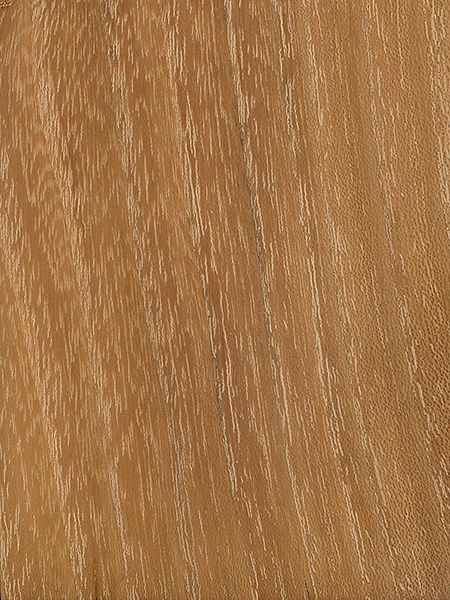
Color/Appearance: Color can range from a pale greenish-yellow to a darker brown. Tends to darken to a russet brown with age. Can be confused with Osage Orange and Honey Locust in some instances.
Grain/Texture: Grain is usually straight, with a medium texture.
Endgrain: Ring-porous; large earlywood pores 2-3 pores wide, small latewood pores in clusters and tangential bands; tyloses extremely abundant; growth rings distinct; rays barely visible without lens; parenchyma vasicentric, aliform, and confluent.
Rot Resistance: Rated as very durable in regard to decay resistance, with good weathering characteristics. Frequently used as fence posts for its outdoor longevity.
Workability: Overall working characteristics for Black Locust are mixed: although the grain is usually straight, its high density and hardness can make it difficult to machine. Black Locust also has a moderate blunting effect on cutting edges. Responds very well to both lathe turning and steam bending; glues and finishes well.
Odor: No characteristic odor.
Sustainability: This wood species is not listed in the CITES Appendices, and is reported by the IUCN as being a species of least concern.
Common Uses: Fence posts, boatbuilding, flooring, furniture, mine timbers, railroad ties, turned objects, and veneer.
Comments: Black Locust is a very hard and strong wood, competing with Hickory (Carya genus) as the strongest and stiffest domestic timber: but with more stability and rot resistance.
Although it shares a similar common name with Honey Locust, the two aren’t in the same genus, (Robinia and Gleditsia, respectively). Black Locust tends to be slightly heavier, harder, and with more of a green or yellow tinge, while Honey Locust tends to have a warmer orange or red tint.

Color/Appearance: Heartwood is a medium to light reddish brown. Wide sapwood is a light yellow, clearly distinguished from the heartwood. Very similar in appearance to Kentucky Coffeetree.
Grain/Texture: Grain is usually straight or slightly irregular, with a medium uneven texture. Moderate natural luster.
Endgrain: Ring-porous; 3-5 rows of large earlywood pores, medium to very small latewood pores commonly arranged in tangential bands; tyloses absent, other reddish heartwood deposits occasionally present; growth rings distinct; rays visible without lens; parenchyma banded, paratracheal parenchyma vasicentric, and latewood is commonly aliform and confluent.
Rot Resistance: Rated as moderately durable to durable; susceptible to insect attacks.
Workability: Honey Locust can be difficult to work with hand and machine tools on account of its density, though it generally produces good results. Turns, glues, stains, and finishes well.
Odor: No characteristic odor.
Sustainability: This wood species is not listed in the CITES Appendices or on the IUCN Red List of Threatened Species.
Common Uses: Furniture, fence posts, utility lumber, and turned objects.
Comments: Somewhat similar in appearance to Black Locust, Honey Locust is technically in a different genus, (Robinia and Gleditsia, respectively), and telling the two apart is somewhat similar to separating White and Red Oak—the pores of Black Locust are packed with tyloses, while they are absent in the pores of Honey Locust. Honey Locust bears a much closer resemblance to Kentucky Coffeetree, which is similar both in color, grain, and anatomy. The latewood pores of Coffeetree tend to be in circular clusters, while they are usually arranged in tangential bands in Honey Locust, being connected by confluent parenchyma.
A related species, Water Locust (Gleditsia aquatica), grows in swamps in the southeast United States, and has similar wood properties and anatomy.
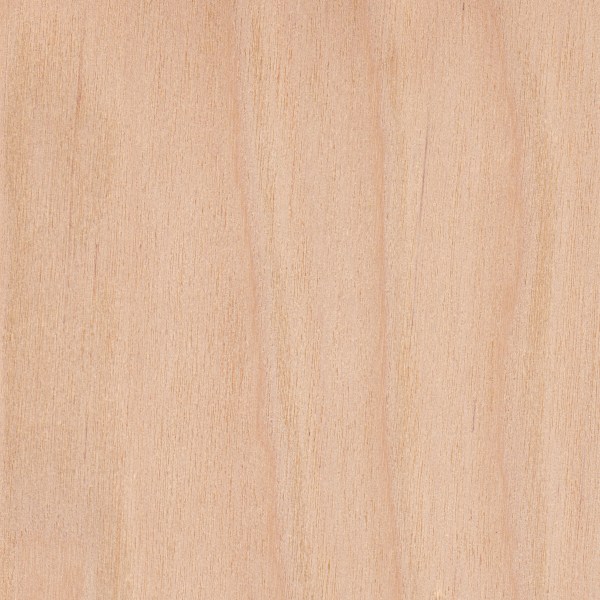
Color/Appearance: Heartwood tends to be a light reddish brown, with nearly white sapwood. Occasionally figured pieces are available with a wide, shallow curl similar to the curl found in Cherry. There is virtually no color distinction between annual growth rings, giving Birch a somewhat dull, uniform appearance.
Grain/Texture: Grain is generally straight or slightly wavy, with a fine, even texture. Low natural luster.
Endgrain: Diffuse-porous; primarily radial multiples; medium pores in no specific arrangement, moderately numerous to numerous; parenchyma maringal, and sometimes diffuse-in-aggregates (faintly visible with lens); narrow rays, spacing fairly close to close.
Rot Resistance: Birch is perishable, and will readily rot and decay if exposed to the elements. The wood is also susceptible to insect attack.
Workability: Generally easy to work with hand and machine tools, though boards with wild grain can cause grain tearout during machining operations. Turns, glues, and finishes well.
Odor: No characteristic odor.
Sustainability: This wood species is not listed in the CITES Appendices or on the IUCN Red List of Threatened Species.
Common Uses: Plywood, boxes, crates, turned objects, interior trim, and other small specialty wood items.
Comments: Birch is one of the most widely used woods for veneer and plywood worldwide. Besides regular sheets of plywood, Birch veneer is also used for doors, furniture, and paneling.

Curly Maple is not actually a species, but simply a description of a figure in the grain—it occurs most often in soft maples, but is also seen in hard maples. It is so called because the ripples in the grain pattern create a three dimensional effect that appears as if the grain has “curled” along the length of the board. Other names for this phenomenon are: tiger maple, fiddleback maple, (in reference to curly maple’s historic use for the backs and sides of violins), or flamed maple.
Unlike quilted maple, curly maple is most pronounced when the board is quartersawn, and the curls usually become much less pronounced or absent in flatsawn boards. Hence, on wide boards where the grain tends to be close to vertical (quartersawn) near the edges and horizontal (flatsawn) in the center, the curly pattern will be most evident on the edges of the board, with the figure diminishing in the center.
It is not completely clear what environmental conditions (if any) cause this phenomenon, but there are different grades of curly maple, which greatly effect its price. Ideally, the criteria for determining value is based upon: color (both uniformity and lightness—whiter is preferred), frequency of the curls (tight, closely-spaced curls are preferred), and intensity (more depth is preferred). Prices can range from just slightly more expensive than regular soft maple for lower grades of curly maple, to triple, quadruple, or higher for prices of the highest grades. But in general, higher grades of curly maple tend to be less expensive than quilted maple, and offer an economical solution for a “figured” hardwood.
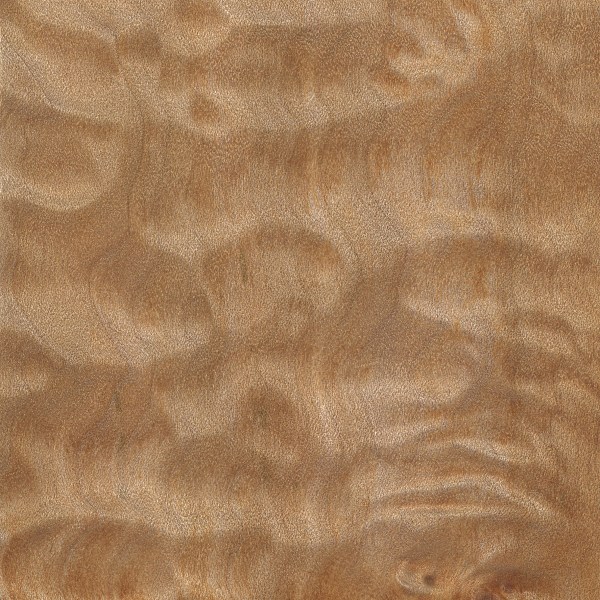
Quitled Maple is not actually a species, but simply a description of a figure in the grain. Quilted maple occurs most often in soft maples, but is also seen in hard maples. (The highest grade quilted maple is most commonly seen in Bigleaf Maple.)
Quilted maple is so named for its resemblance to patchwork patterns seen on fabric quilts. Much like birdseye maple, the figure on quilted maple becomes most pronounced when the board has been flatsawn, which is the opposite of curly maple, which becomes most prominent when quartersawn. Alternate names and sub-categories for this type of figuring include blistered, curly-quilt, sausage-quilt, tubular-quilt, and angel-step.
There are varying grades of quilted maple, based upon the perceived depth of the quilt, as well as the purity of color of the wood itself (with a pure and uniform white being the most valuable). Quilted maple billets are often sold for extremely high prices for use as tops of electric guitars. They are frequently dyed in outlandish colors such as blue, green, or purple to give an “electric” effect to the grain pattern. One technique that is used to further enhance the grain pattern is to initially dye the wood a very dark brown or black, and then sand back almost to raw wood, leaving just a residue of black dye remaining in the low spots of the grain’s figure, and then reapply a dye of the final color. The result will be accented and shadowed by the darker dye that was left in the low portions of the grain, while the primary color is brought out in the body of the wood.

Burls yield a very peculiar and highly figured wood, prized for its beauty and rarity. It is sought after by furniture makers, artists, and wood sculptors. There are a number of well-known types of burls (each from a particular species); these are highly valued and sliced into veneers for furniture, inlay in doors, picture frames, household objects, automobile interior paneling and trim, and woodturning. The famous birdseye maple of the sugar maple (Acer saccharum) superficially resembles the wood of a burl but is something else entirely. Burl wood is very hard to work with hand tools or on a lathe because its grain is twisted and interlocked, causing it to chip and shatter unpredictably. This “wild grain” makes burl wood extremely dense and resistant to splitting, which made it valued for bowls, mallets, mauls and “beetles” or “beadles” for hammering chisels and driving wooden pegs.
Some burls are more highly prized than others, including ones from rural areas in central Massachusetts, northeast Connecticut, and as far south as Philadelphia. Some resemble an explosion in which the grain grows erratically, and it is these burls that the artist prizes over all other types. These spectacular patterns enhance the beauty of wood sculptures, furniture, and other artistic productions.
Burls are harvested with saws or axes for smaller specimens and timber felling chainsaws and tractors for massive ones.

Much like Spalted Maple and other forms of figured maple, Ambrosia Maple is technically not a specific species of Maple, but rather a general description of any type of Maple that has been infested by ambrosia beetles. The beetles bore into the tree, and with it bring fungus that discolors the wood.
Ambrosia Maple is considered a decorative feature which gives the wood additional character, and is sometimes available for purchase. A special thanks to Mike Leigher for providing the wood sample of this wood species.
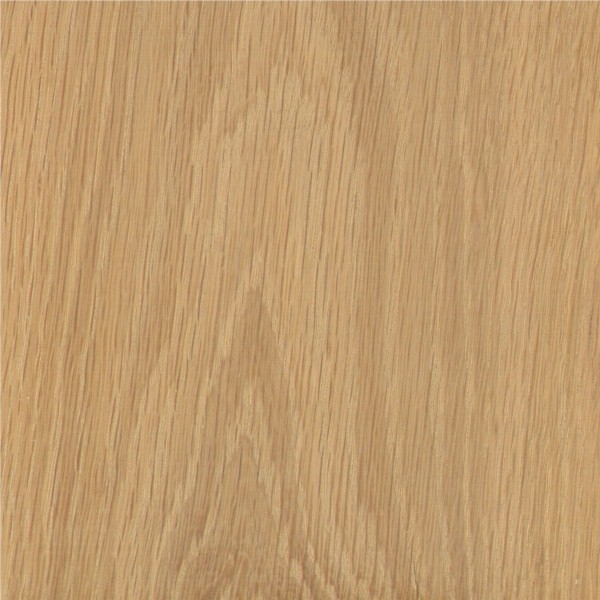
Color/Appearance: Heartwood is a light to medium brown, commonly with an olive cast. Nearly white to light brown sapwood is not always sharply demarcated from the heartwood. Quartersawn sections display prominent ray fleck patterns. Conversely, Red Oak tends to be slightly redder, but is by no means a reliable method of determining the type of oak.
Grain/Texture: Grain is straight, with a coarse, uneven texture.
Endgrain: Ring-porous; 2-4 rows of large, exclusively solitary earlywood pores, numerous small to very small latewood pores in radial arrangement; tyloses abundant; growth rings distinct; rays large and visible without lens; apotracheal parenchyma diffuse-in-aggregates (short lines between rays).
Rot Resistance: Rated as very durable; frequently used in boatbuilding and tight cooperage applications.
Workability: Produces good results with hand and machine tools. Has moderately high shrinkage values, resulting in mediocre dimensional stability, especially in flatsawn boards. Can react with iron (particularly when wet) and cause staining and discoloration. Responds well to steam-bending. Glues, stains, and finishes well.
Odor: Has a tell-tale smell that is common to most oaks. Most find it appealing.
Sustainability: This wood species is not listed in the CITES Appendices or on the IUCN Red List of Threatened Species.
Common Uses: Cabinetry, furniture, interior trim, flooring, boatbuilding, barrels, and veneer.
Comments: White Oak is the state tree of Connecticut, Illinois, and Maryland. Connecticut’s state quarter was minted with a picture and inscription of a famous White Oak tree, The Charter Oak.
White Oak is strong, beautiful, rot-resistant, easy-to-work, and economical, representing an exceptional value to woodworkers. It’s no wonder that the wood is so widely used in cabinet and furniture making.
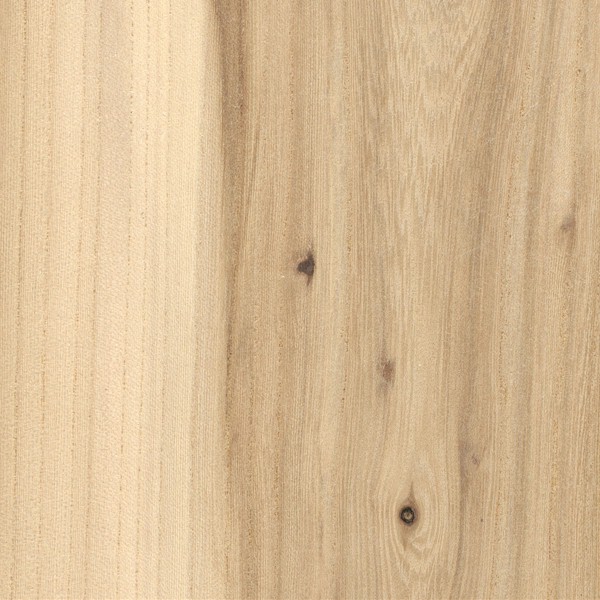
Color/Appearance: Heartwood is a light to medium brown, sometimes with a hint of red. Sapwood is a pale white or cream color.
Grain/Texture: Has a medium texture and moderate-sized pores. Grain is sometimes straight, but commonly interlocked.
Endgrain: Ring-porous; large to very large earlywood pores in a continuous row one or two pores wide, small latewood pores in wavy bands; tyloses occasionally present in earlywood; growth rings distinct; parenchyma vasicentric and confluent; medium rays, spacing normal.
Rot Resistance: Rated as moderately durable to non-durable in regard to heartwood decay, but is susceptible to insect attack, and living trees are very commonly destroyed by Dutch elm disease.
Workability: Can be a challenge to work because of interlocked grain, especially on quartersawn surfaces. Planing can cause tearout and/or fuzzy surfaces. Glues, stains, and finishes well. Responds well to steam bending.
Odor: Elm usually has a strong, unpleasant smell when green; though once dried has very little odor.
Sustainability: This wood species is not listed in the CITES Appendices or on the IUCN Red List of Threatened Species.
Common Uses: Boxes, baskets, furniture, hockey sticks, veneer, wood pulp, and papermaking.
Comments: Elm trees are commonly infected with Dutch elm disease, a fungal disease spread by elm bark beetles. D.E.D. has wiped out millions of Elm trees worldwide.
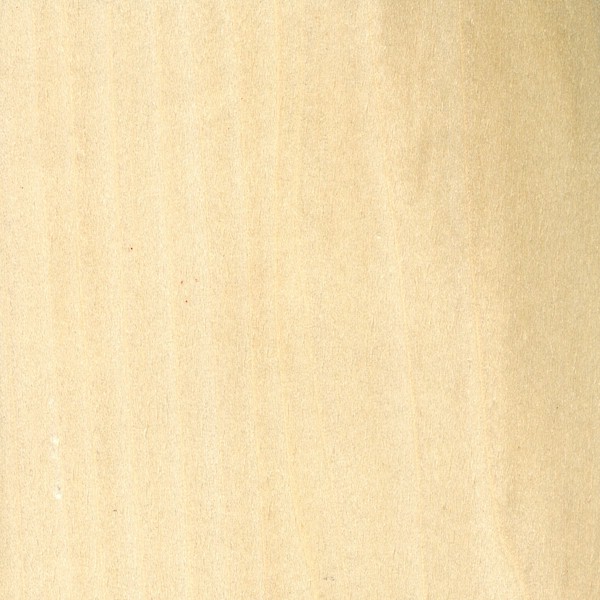
Color/Appearance: Heartwood is light cream to yellowish brown, with occasional streaks of gray or green. Sapwood is pale yellow to white, not always clearly demarcated from the heartwood. Can also be seen in mineral stained colors ranging from dark purple to red, green, or yellow, sometimes referred to as Rainbow Poplar. Colors tend to darken upon exposure to light.
Grain/Texture: Poplar typically has a straight, uniform grain, with a medium texture. Low natural luster.
Endgrain: Diffuse-porous; small pores in no specific arrangement; solitary and radial multiples of 2-3; tyloses occasionally present; growth rings distinct due to marginal parenchyma and noded rays; rays not visible without lens; parenchyma banded (marginal).
Rot Resistance: Heartwood is rated as being moderately durable to non-durable; susceptible to insect attack.
Workability: Very easy to work in almost all regards, one of Poplar’s only downsides is its softness. Due to its low density, Poplar can sometimes leave fuzzy surfaces and edges: especially during shaping or sanding. Sanding to finer grits of sandpaper may be necessary to obtain a smooth surface.
Odor: No characteristic odor.
Sustainability: This wood species is not listed in the CITES Appendices or on the IUCN Red List of Threatened Species.
Common Uses: Seldom used for its appearance, (except in the case of Rainbow Poplar), Poplar is a utility wood in nearly every sense. It’s used for pallets, crates, upholstered furniture frames, paper (pulpwood), and plywood. Poplar veneer is also used for a variety of applications: either dyed in various colors, or on hidden undersides of veneered panels to counteract the pull of the glue on an exposed side that has been veneered with another, more decorative wood species.
Comments: Poplar is one of the most common utility hardwoods in the United States. Though the wood is commonly referred to simply as “Poplar,” it is technically not in the Populus genus itself, (the genus also includes many species of Cottonwood and Aspen), but is instead in the Liriodendron genus, which is Latin for “lily tree.” The flowers of this tree look similar to tulips, hence the common alternate name: Tulip Poplar.
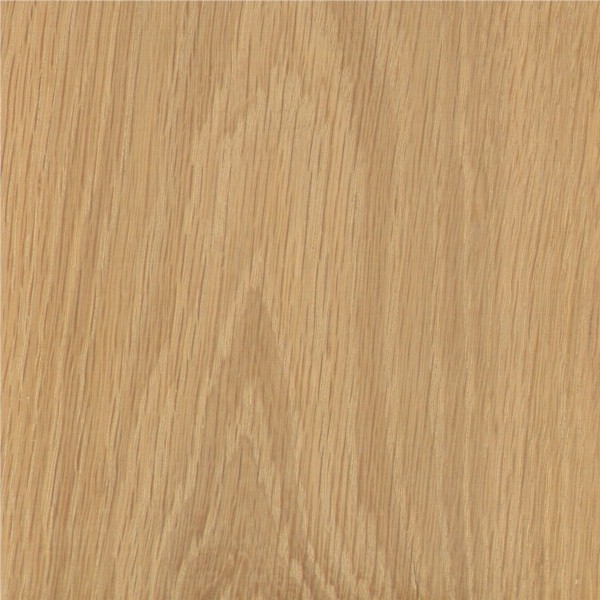
Color/Appearance: Heartwood is a light to medium brown, commonly with an olive cast, though there can be a fair amount of variation in color. Nearly white to light brown sapwood is not always sharply demarcated from the heartwood. Quartersawn sections display prominent ray fleck patterns.
Grain/Texture: Grain is straight, with a coarse, uneven texture. May have irregular or interlocked grain depending on growing conditions of the tree.
Endgrain: Ring-porous; 2-4 rows of large, exclusively solitary earlywood pores, numerous small to very small latewood pores in radial arrangement; tyloses abundant; growth rings distinct; rays large and visible without lens; apotracheal parenchyma diffuse-in-aggregates (short lines between rays).
Rot Resistance: English Oak has been rated as having very good resistance to decay, and is commonly used in boatbuilding applications.
Workability: Produces good results with hand and machine tools. Can react with iron (particularly when wet) and cause staining and discoloration. Responds well to steam-bending. Glues, stains, and finishes well.
Odor: Has a tell-tale smell that is common to most oaks. Most find it appealing.
Sustainability: This wood species is not listed in the CITES Appendices, and is reported by the IUCN as being a species of least concern.
Common Uses: Cabinetry, furniture, interior trim, flooring, boatbuilding, barrels, and veneer.
Comments: English Oak falls into the white oak group, and shares many of the same traits as White Oak (Quercus alba).
One of the most famous English Oak trees, The Major Oak, is a massive tree located in Sherwood Forest, in Nottinghamshire, England. The tree is estimated to be approximately 1,000 years old, and is purported to have been a common hideout for Robin Hood and his outlaws.